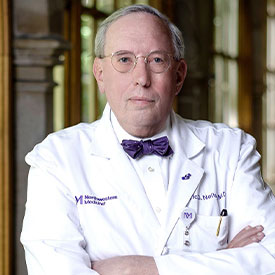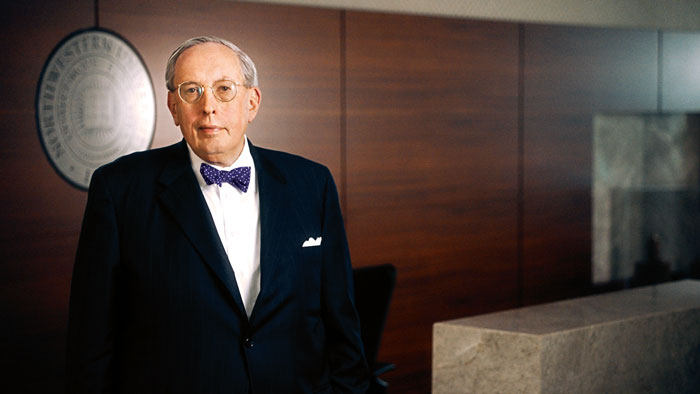 A lengthy journey from Long Island, New York, to Birmingham, Alabama, put Eric Neilson, M.D. ’75, on a path to be a medical student, physician-scientist, mentor, and ultimately a medical school dean.
A lengthy journey from Long Island, New York, to Birmingham, Alabama, put Eric Neilson, M.D. ’75, on a path to be a medical student, physician-scientist, mentor, and ultimately a medical school dean.
Neilson, who grew up in Garden City, New York, is the vice president for medical affairs and the Lewis Landsberg dean at Northwestern University Feinberg School of Medicine. A vibrant Chicago cityscape surrounds the school, and Neilson notes the city he has called home for the past eight years still energizes him.
“It’s an incredibly invigorating academic setting,” Neilson says. “If you have the right faculty who have the right belief structure, you can share similar values in a research-intensive environment seeking to improve human health beyond the individual patient. We’re also getting ready to open a new research building, the Simpson Querrey Biomedical Research Center, which I’m excited about.”
He had this same excitement starting out as a medical student at UAB in the early ’70s. Neilson says he was unsure how he would strengthen both his research skills and learn the ins and outs of medicine, but the medical school eased his worries. “One of my best experiences at UAB was how they taught me to interact with patients,” Neilson says. “It was first-rate education. Dr. Tinsley Harrison taught my ‘Introduction to Critical Medicine.’ I had great attending physicians who had charm, guile, and great communication skills, and they could get a lot of information out of people.”
Honing his observation and listening skills served Neilson well during his 13 years as Vanderbilt University School of Medicine’s Hugh Jackson Morgan chair in the Department of Medicine. He started having lunch with a group of women faculty members, which led to back-and-forth Q&A sessions and idea sharing.
 Eric Nielson
Eric Nielson
“We thought if very talented women faculty had a platform to tell their stories, then it might inspire other women to explore the science in medicine,” Neilson says. “We weren’t just looking for a project. We were looking for a specific purpose.” The result of those conversations, the women’s efforts and input, and Neilson’s editing resulted in a book titled, “What’s Past is Prologue: The Personal Stories of Women in Science at the Vanderbilt University School of Medicine” (Hillsboro Press, 2006).
Fast forward to 2019. Communication between faculty members and department chairs is more likely to happen over email or social media than a face-to-face discussion over lunch. Social media platforms have provided additional paths for feedback. Verbal communication skills remain vital in a medical environment, Neilson says. “Technology is a double-edged sword,” he opines. “Often it can be quite useful, but you can’t fully replace taking a patient’s history and doing a physical examination with technology. Patients don’t necessarily benefit from that, and technology isn’t the answer to everything. Finding the right mix is key.”
In addition to having good communication skills, Neilson says he views showing empathy as one of the most important traits a physician can bring to the bedside. Understanding what fears patients have and how to mitigate those concerns can have a significant impact. “It’s an art form engaging patients, because sometimes they won’t tell you what they are worried about,” he notes.
Neilson developed his skillset at UAB, and he carried it with him to the University of Pennsylvania as a resident and renal fellow. “The faculty and other students at UAB do a lot to shape your key values,” Neilson says. “You grow up in the shadows of mature people. UAB had spectacular trainees and faculty, and it made a huge difference for me. I have come to appreciate that greatly as I have traveled through many different places along my career.”
By Brian Hudgins